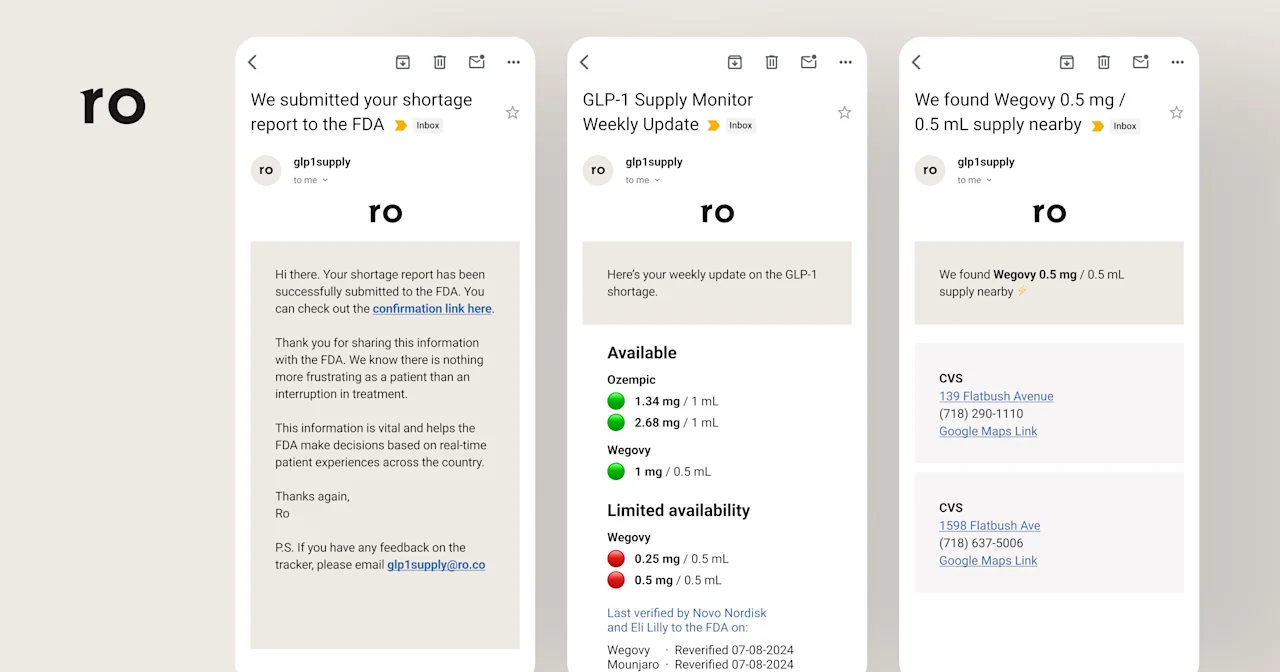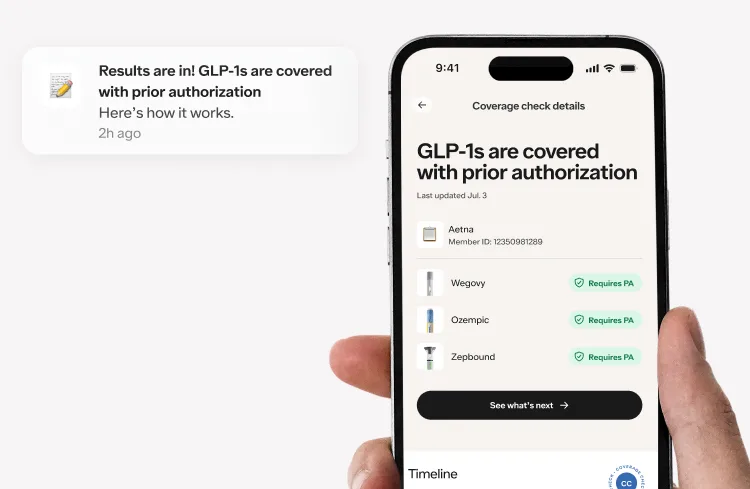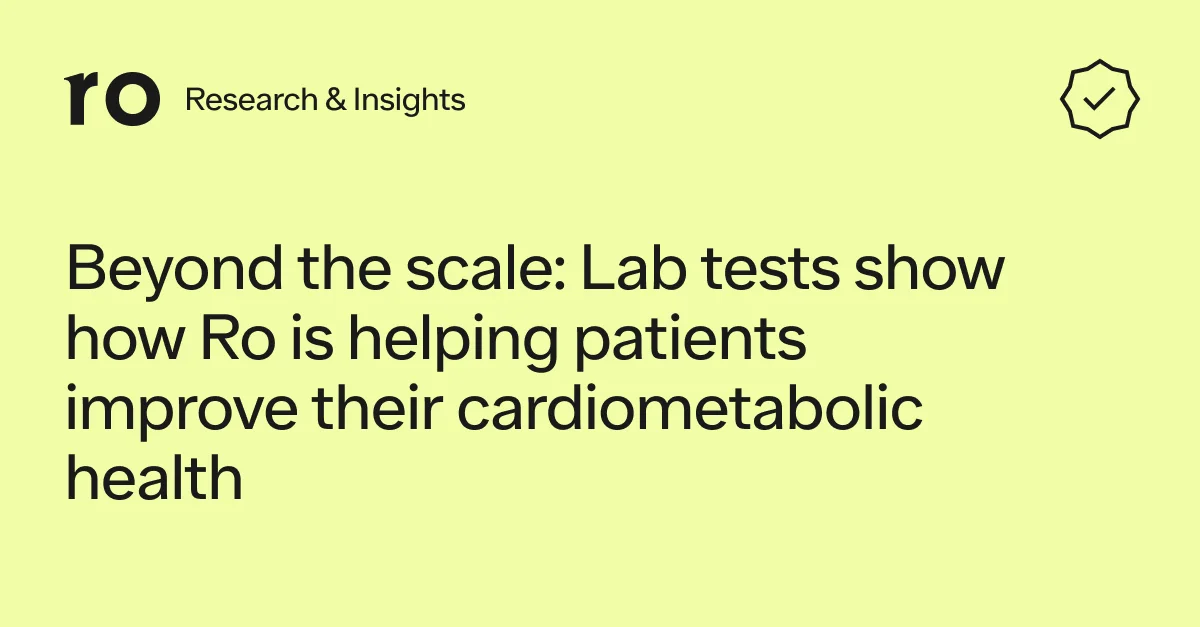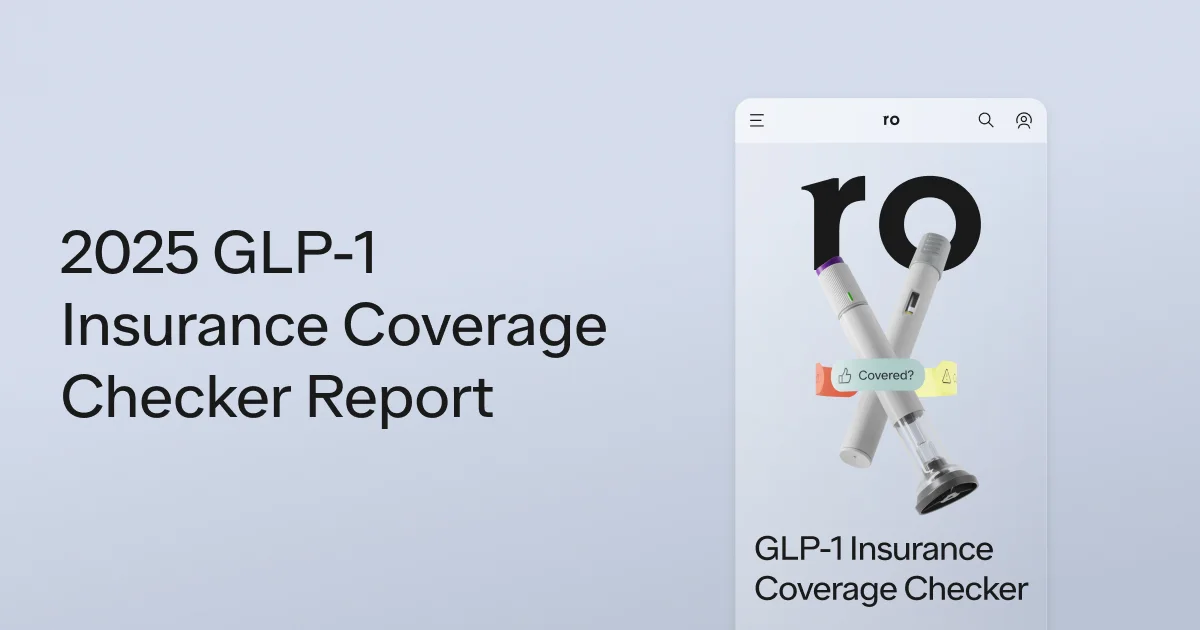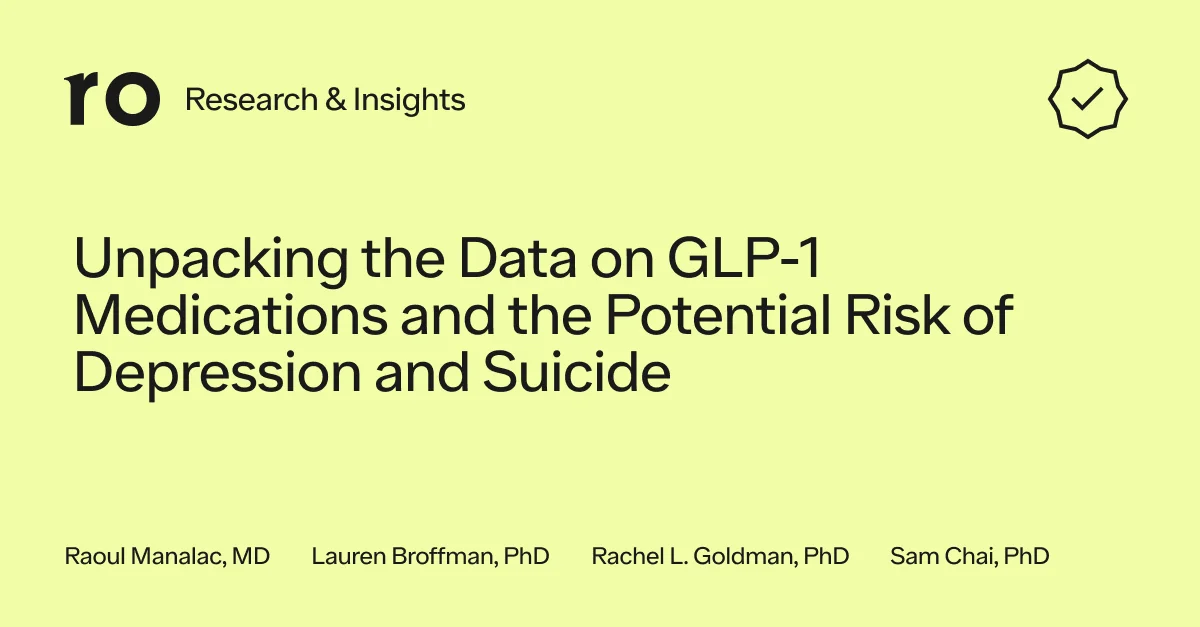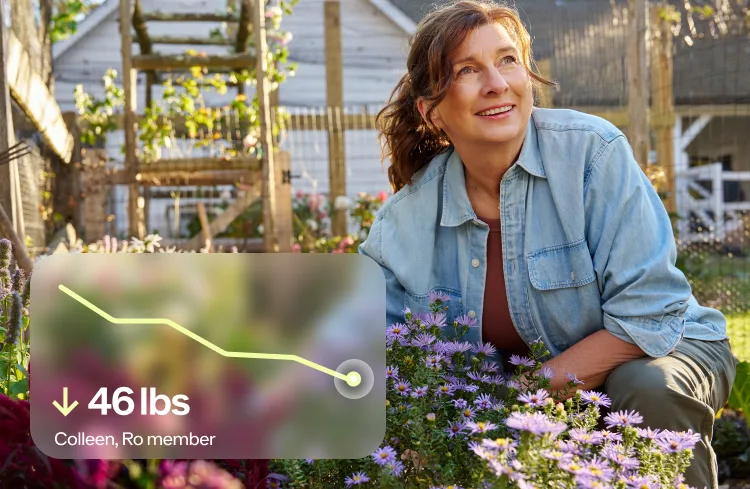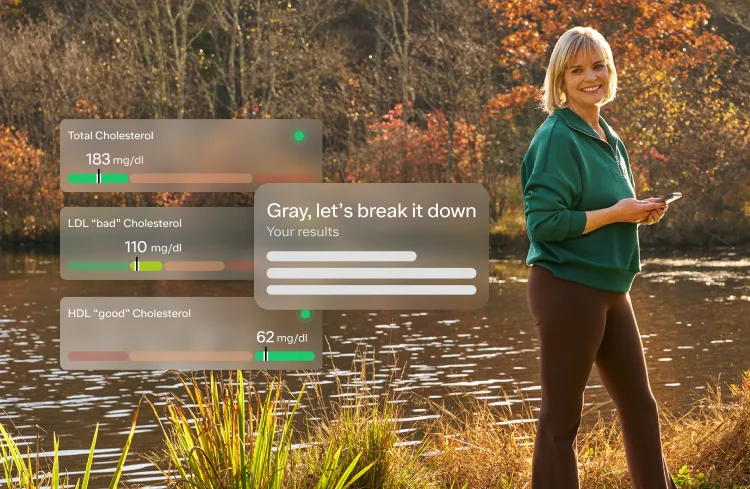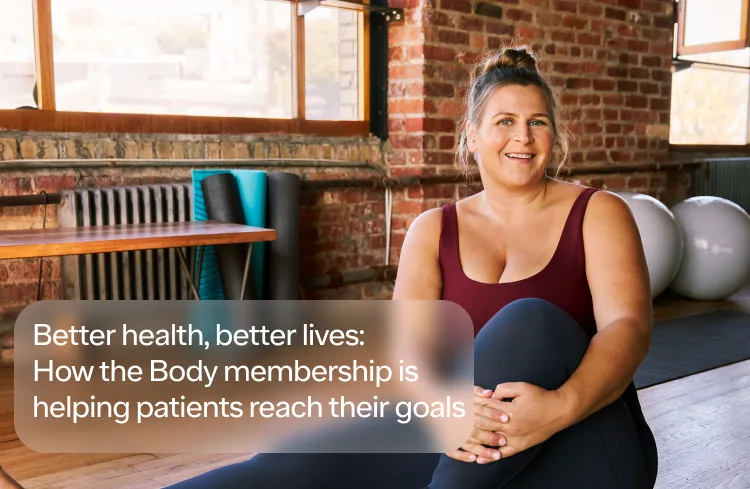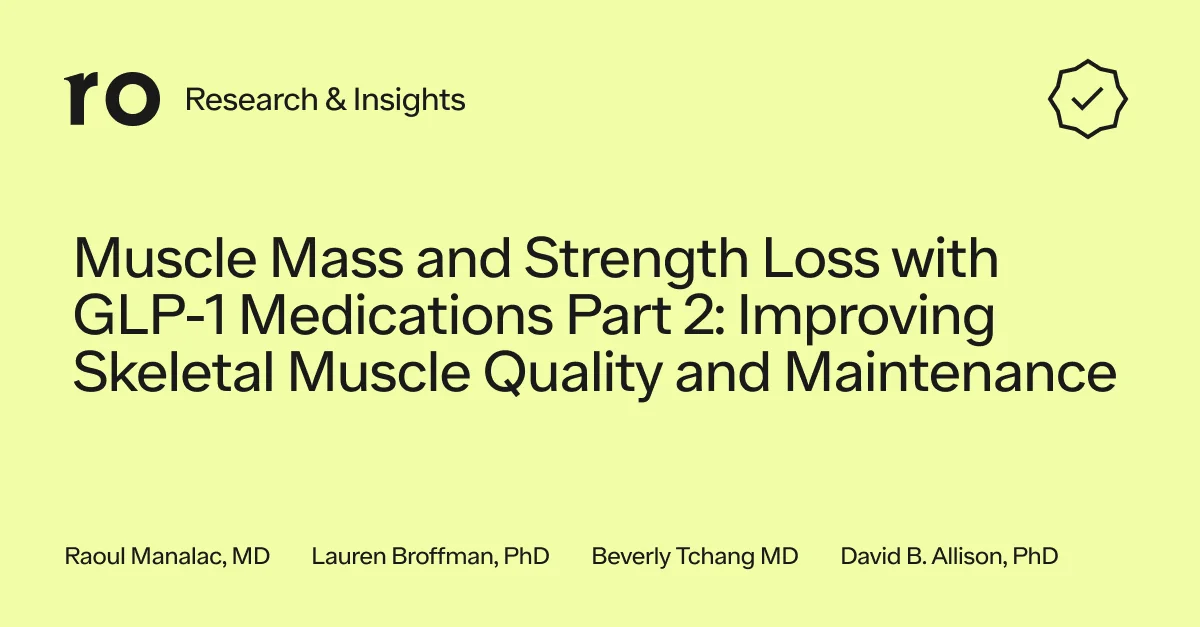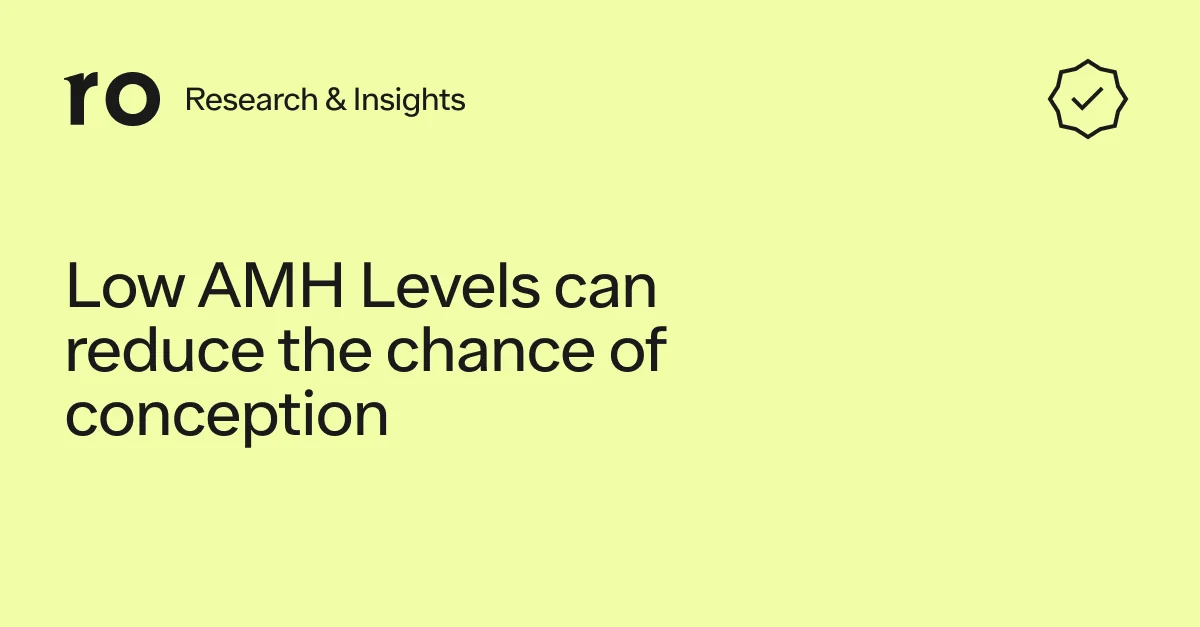Here's what we'll cover
Here's what we'll cover
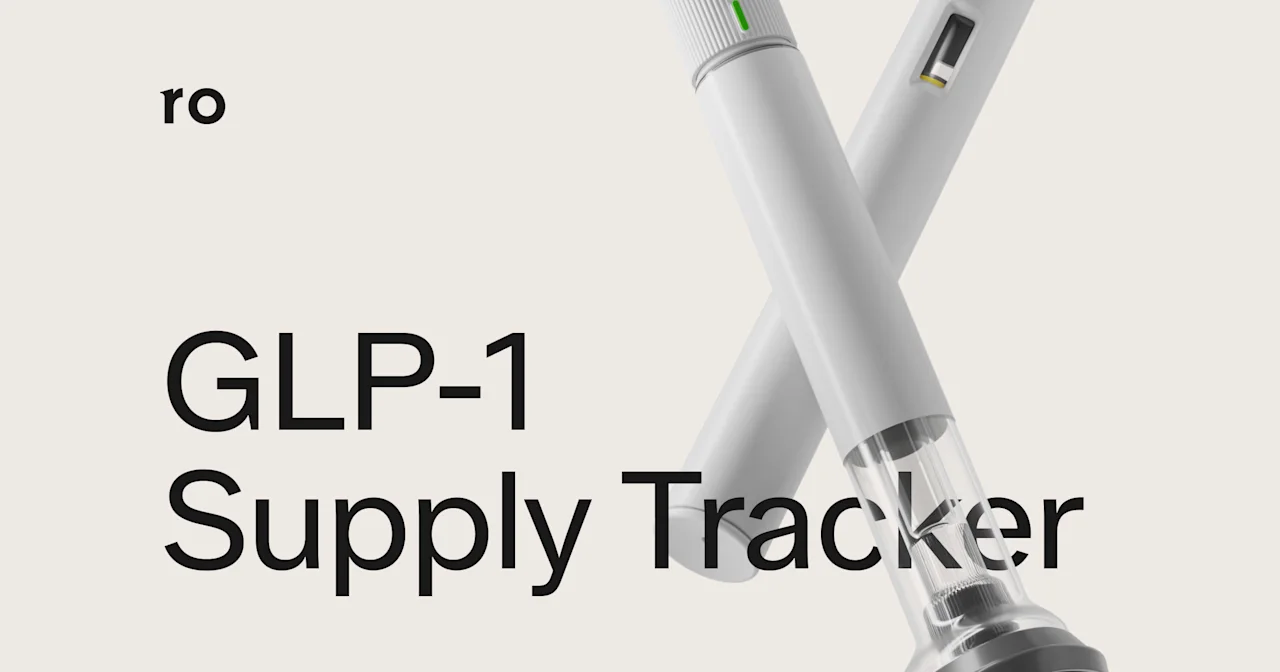
Introducing Ro's GLP1 Supply Tracker.
Over the last few weekends, a few Ro’ers built a GLP1 Supply Tracker to fill the gap that our patients and providers are currently struggling with -- finding out which GLP1s are available (and where) and which aren’t. We originally started building this tool exclusively for our own patients. We always prioritize building for Ro patients, they are paying us for their health care and deserve our singular focus. But, the more we thought about it, the more we realized that the tool works better for all patients (Ro and non-Ro patients) the greater the number of people that have access to it.
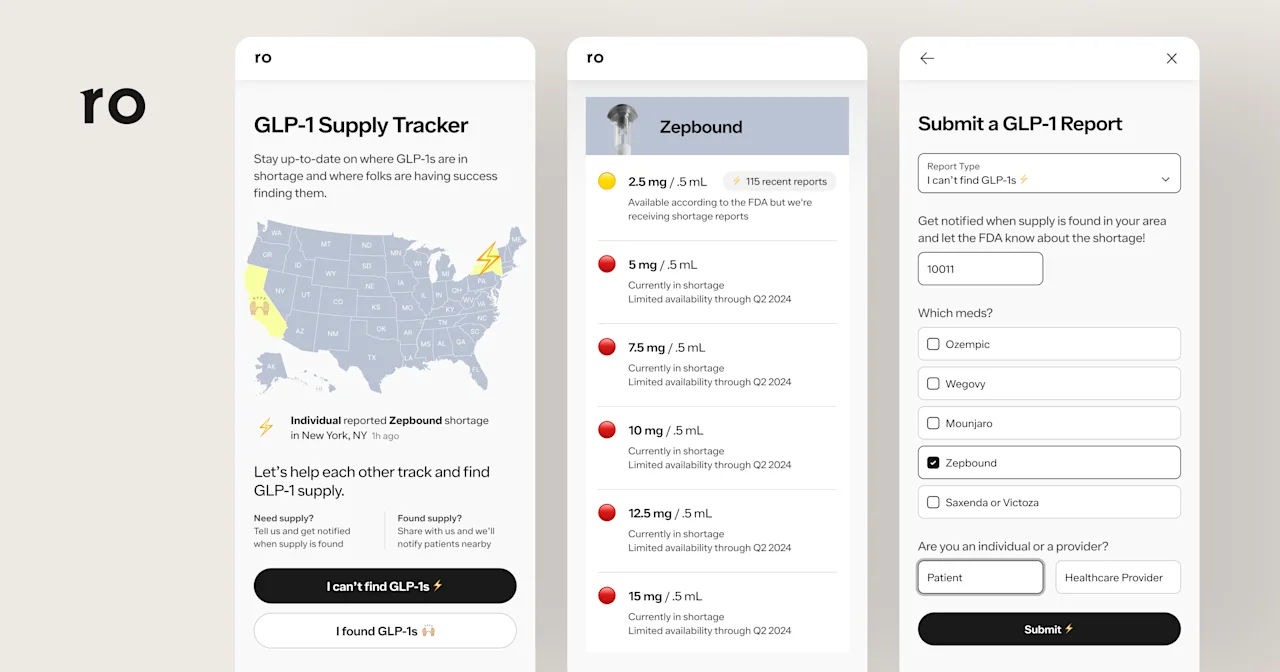
Using a combination of publicly available and user-generated data, this GLP1 Tracker does four very simple things:
1. Shows which GLP1s are on shortage by drug and dose
Throughout the day, we are combing the FDA’s shortage website for national availability information, and collecting user-generated data by location, to update the tracker in real time. While the FDA’s information is publicly available, it’s only searchable by active ingredient, not brand name (which is usually what patients know), and only searchable by one drug at a time. This tracker is also helpful for providers who need to know what patients may or may not be able to access if they write a prescription.
2. Enables anyone to submit a Shortage Report to the FDA and get on the “Supply List”
Patients enter the drug/dose they are having trouble finding along with their Zip Code and email address and we will do two things:
Automatically submit a "Shortage Report" to the FDA through the FDA's portal on their behalf (with their permission)
Put them on a list to be notified when supply is found in their Zip Code
3. Patients can share where they found supply 🙌
Any patient (even if you’re not a Ro customer) can pay it forward and share where they found supply – entering the pharmacy, drug, and dose. We’ll do this automatically for Ro patients when they log that they picked up their medication. This means Ro’s nationwide patient population, just by going about their care journeys, contributes de-identified supply insights that help each other more effectively find their medication. When supply is found, we automatically email patients nearby with the pharmacy, address, and phone number so they can call and ask the pharmacy to transfer their Rx from their current pharmacy.
4. Sends notifications when there is a change to the FDA List
Patients, providers, and anyone else who may be impacted can sign up to be notified when there is a change to the status of these GLP1s on the FDA’s website. We’ll send an email weekly if there is no change and the same day if there is a change.
Why Build This Tool?
Over the last 2 years, I’ve spoken with hundreds of patients with obesity. I’ve read tens of thousands of messages, been deep in Reddit forums and I’ve followed hundreds of thousands patient journeys on the Ro platform.
Patients finally have an obesity treatment available to them that actually works -- but because of ongoing challenges with supply -- they have to literally hunt down their medication, sometimes calling every pharmacy in their city just to come up empty.
Given Ro’s national coverage, having helped millions of patients across the country and one in nearly every single county in the US, we felt uniquely positioned to combine our data with publicly available information to increase patient access to these revolutionary new treatments.
While there is a public shortage list, it has a few limitations. The list is:
National but supply is local
Relatively static (updates 1-3x per month) and supply is dynamic (e.g., a pharmacy could have supply on Monday but not on Tuesday).
From a patient and provider’s perspective, the official FDA shortage list unfortunately doesn’t always reflect patients’ reality in real-time (it was never designed to do so and it’s not an inventory management system). For example, while a certain dose of Zepbound may not be listed officially on shortage, it may not actually be available to the hundreds of thousands of patients who need it. We’ve seen this type of situation occur many times over the last two years. It became clear that we needed a better way to help patients both navigate the shortage and find supply other than simply calling pharmacies and pointing to the FDA’s website.
We hope this tool:
1. Helps patients find supply
There is an incredible community forming online of patients trying to help other patients find medication. But it’s stuck in comments in forums or on social media. So, we built a tool that allows patients to crowdsource and aggregate their efforts, in a structured and fully automated way, and pay it forward.
In radical transparency, we have beat our head against the wall at Ro over the last 12 months to try and find ways to call pharmacies for patients to find supply. Last July/August, we made over 50,000 calls to pharmacies. We built internal tools that would build lists of pharmacies to call based on patients’ Zip Codes. We built AI bots to call pharmacies to check in on supply for patients. The long and short of it is that calling pharmacies across the country has unfortunately been minimally effective. Side note: it would be great if pharmacies listed this publicly in real-time as I’m sure patients, providers, and healthcare companies calling and asking for supply is not the best use of the phone line (albeit sometimes necessary). This is a very solved problem in most other consumer industries (e.g., “in stock until XYZ”, “reserve”, “be notified” etc.).
2. Bridges the gap between patient reality and the FDA’s website
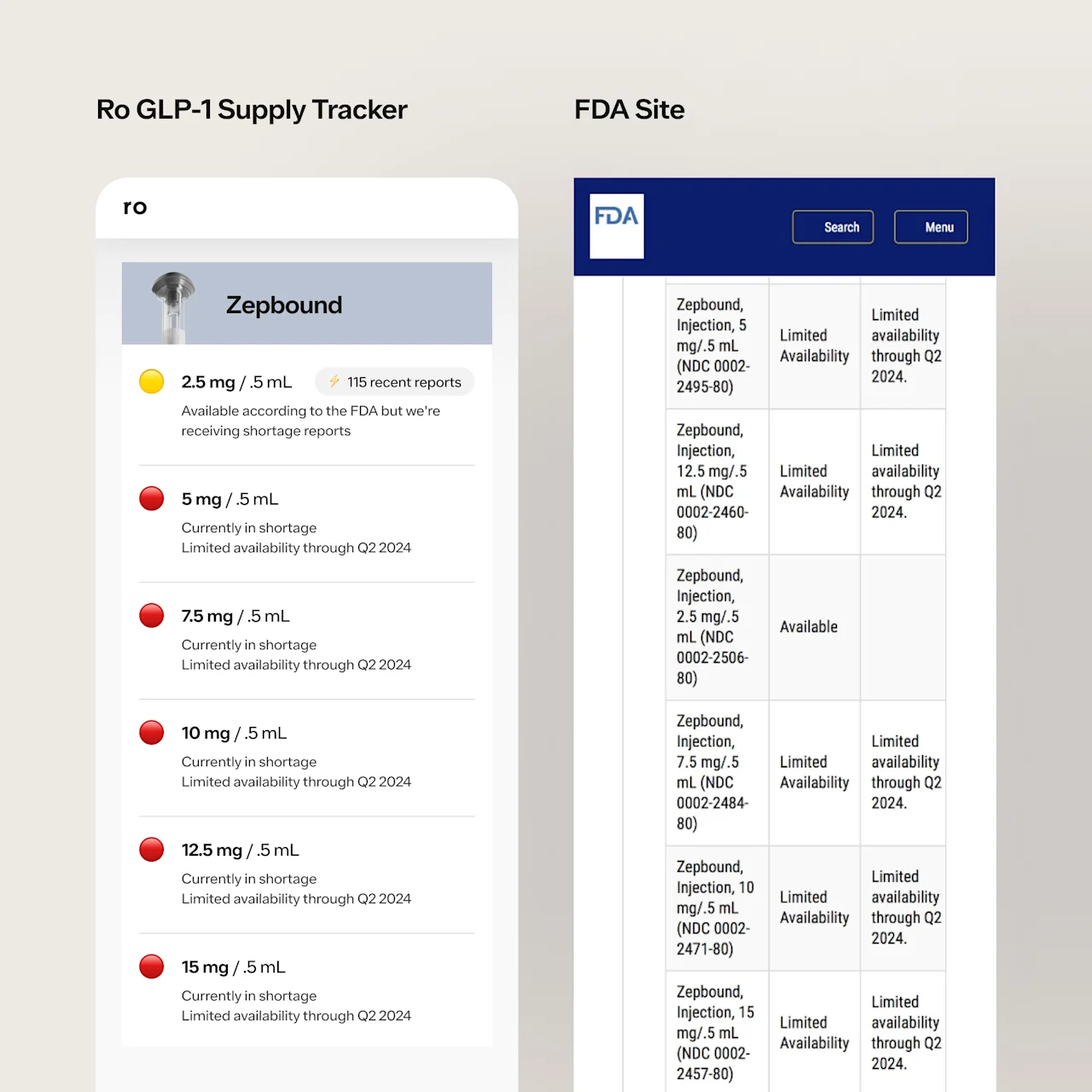
There is a significant mismatch between the reality patients face in terms of “availability” and what is listed on the FDA’s website. It’s important to note that I do not blame the FDA here. But I think we can help by making it easier for patients and providers to share more information with them.
Recently, the FDA changed the status of Wegovy 1.7mg from “Limited Supply” to “Available”. I don’t know all of the inputs that go into this decision but I can tell you based on our data (which is national and in the tens of thousands) — the drug is not easily available to patients across the country.
Just based on two high level metrics when it was removed from the shortage list (based on pharmacy supply calls and patient’s pick up rates here at Ro):
Pharmacy Supply Calls:
38% of pharmacies have stock
15% do not have stock but expect to have it in the future
48% say it’s on “back order” and “materially less supply than other Wegovy doses”
Patient pick up rates:
30-35% are able to find supply in 14 days
65-70% are able to find supply in 30 days
If providers are using the FDA’s list to determine what path to recommend for their patients, we need to ensure the FDA has as much information as possible to make that determination. This is where Ro, other healthcare companies, and patients can work together and help.
Our hope is that by building this tool we can:
Enable patients to crowdsource whatever supply is available and help one another
Share real-time patient shortage reports with the FDA
Enable healthcare stakeholders to be kept up to date with both FDA statuses and what we’re seeing patients actually report (especially if there is a mismatch) to help them best guide patients.
Patients deserve better
When it comes to obesity and these revolutionary new drugs (GLP1s+), we have to hold two competing ideas simultaneously.
On one hand, we have the most effective and “potentially” scalable intervention to the most common chronic disease in the world. It took decades of courageous research and billions of dollars to bring to life what we have today. Most importantly, things will only get better from here!
The treatments today are as ineffective as they will ever be, looking ahead:
Weight loss efficacy is increasing from 15% to 20% to 25% to 30%
The label is expanding from Diabetes to Obesity to Heart Disease and likely Kidney Disease and Sleep Apnea. It’s being studied for more (addiction, mental health, Alzheimer’s)
Prices are coming down (Zepbound is 20% less expensive than Wegovy)
But, on the other hand:
Medicare is legally prevented from covering GLP1s for obesity
Only 16 states cover anti-obesity medications under Medicaid
50% or less commercial plans cover GLP1s for obesity, and those that do often have unreasonable hurdles
“Covered” can still mean $500-1000 out of pocket every month.
Drugs that are listed as “Available” are backordered across the country.
I know affordable and easy access will take time. It always does. But, in the interim, patients deserve, at the very least, accurate information so they, and their healthcare provider, can make informed decisions about their health.
The first principle at Ro is to fight for patients. Navigating the shortage, across many disparate parts of the healthcare system is hard. It shouldn’t be. Patients deserve better. They deserve easy access to the most effective healthcare. Ro will continue to fight for them, in big and small ways, every single day.
